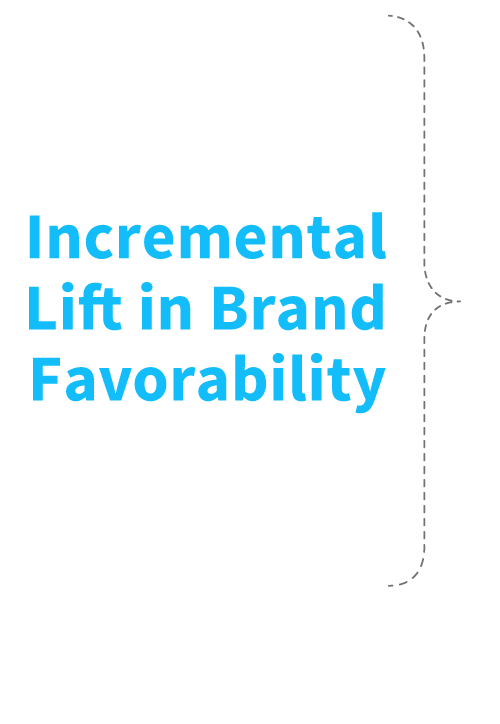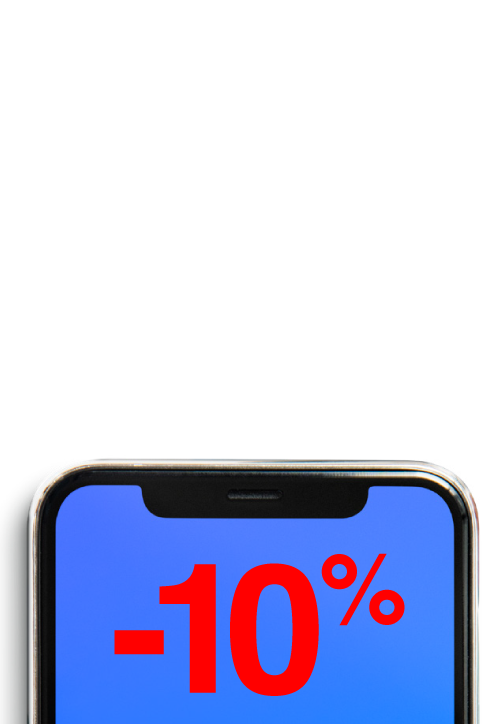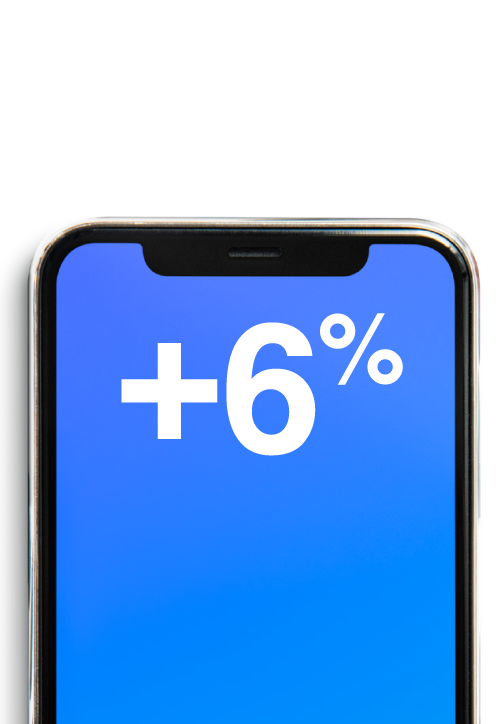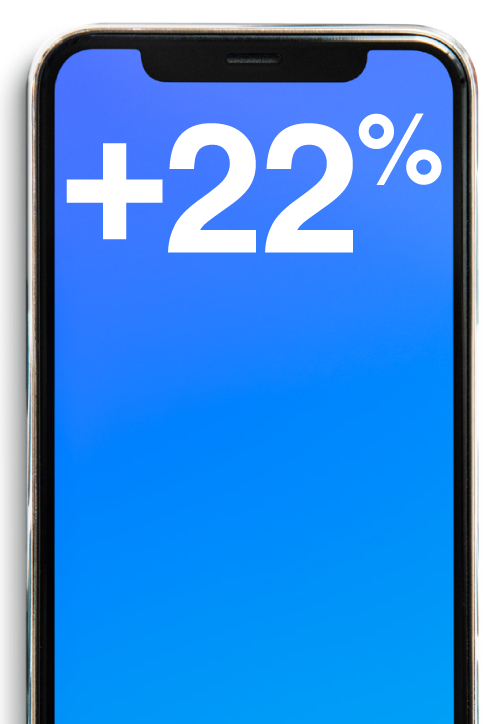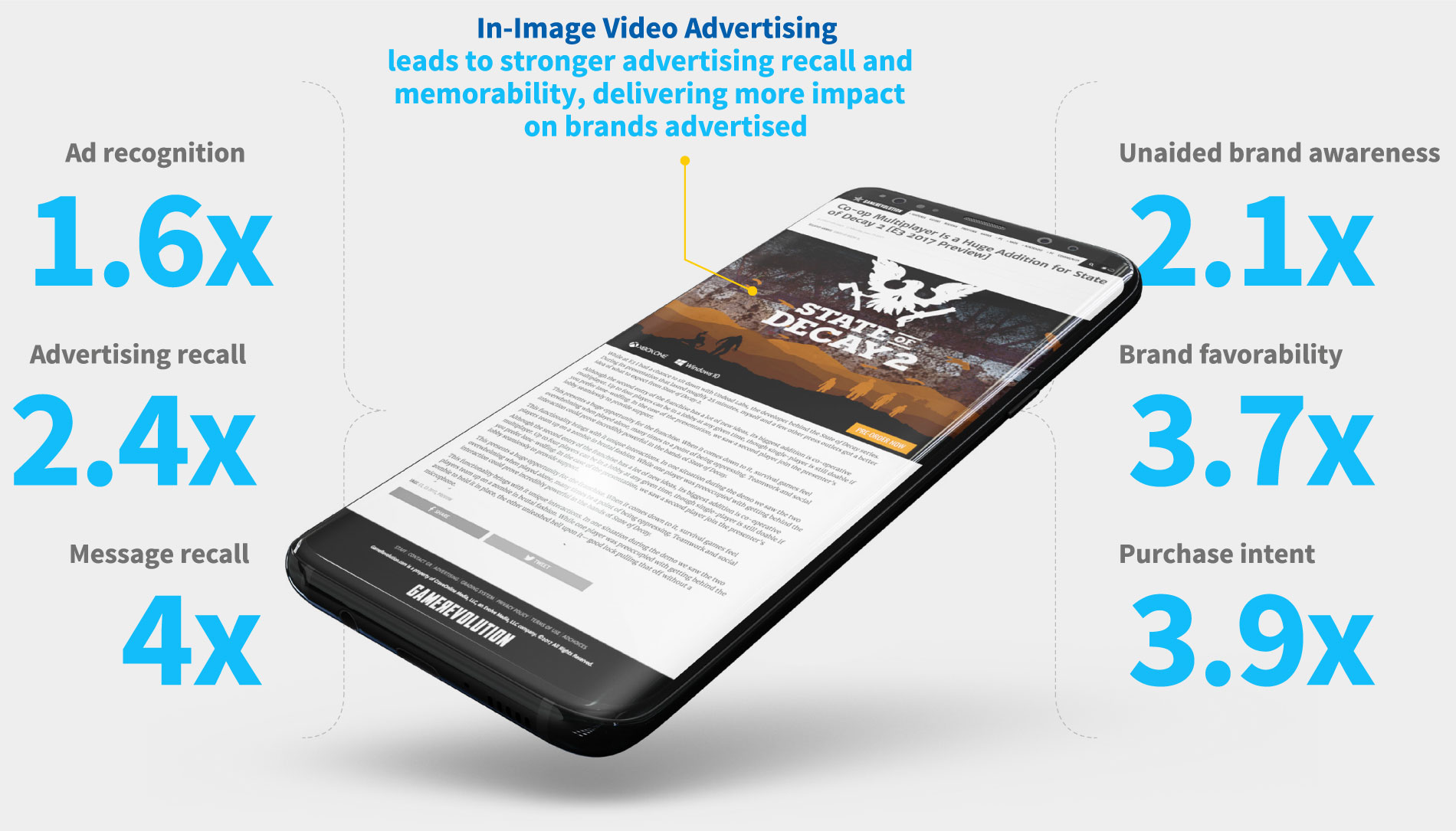Efficiently reach users
through visual media
For marketing, this is truly the era of digital content.
As the sheer volume of content consumed continues its incredible upward trajectory, much of this increase is driven by the development of visual content.
So how can this content be fully leveraged in today’s digitally led mobile world?
MetrixLab and Seedtag dive in to find out.
Results and insights from this paper are based on research conducted by MetrixLab – an independent market research and consultancy company specializing in ad effectiveness and consumer research – in conjunction with Seedtag – an ad-tech company that uses a proprietary technology to understand the content and transform images into premium ad inventory. This research and the subsequent results and implications presented in this paper are based on a robust study of over 1,000 consumers who evaluated both common display and In-Image advertising. All of the ad units were evaluated in-context on websites utilizing a variety of system 1 and system 2 measurement techniques including passive viewing tracking, emotional response, eye-tracking and implicit response testing.

Ad placement is critical
to performance
Placing ads on images, the main element of content, leads to consumers noticing the ads 3.4 seconds faster on average than common display formats. While this shouldn’t be a surprise since viewers’ eyes are often initially drawn to the central image, the implication is significant – especially for ads with multiple frames or scenes. Viewers miss the beginning of an ad if they don’t notice it until 4+ seconds into the ad, so every second counts.
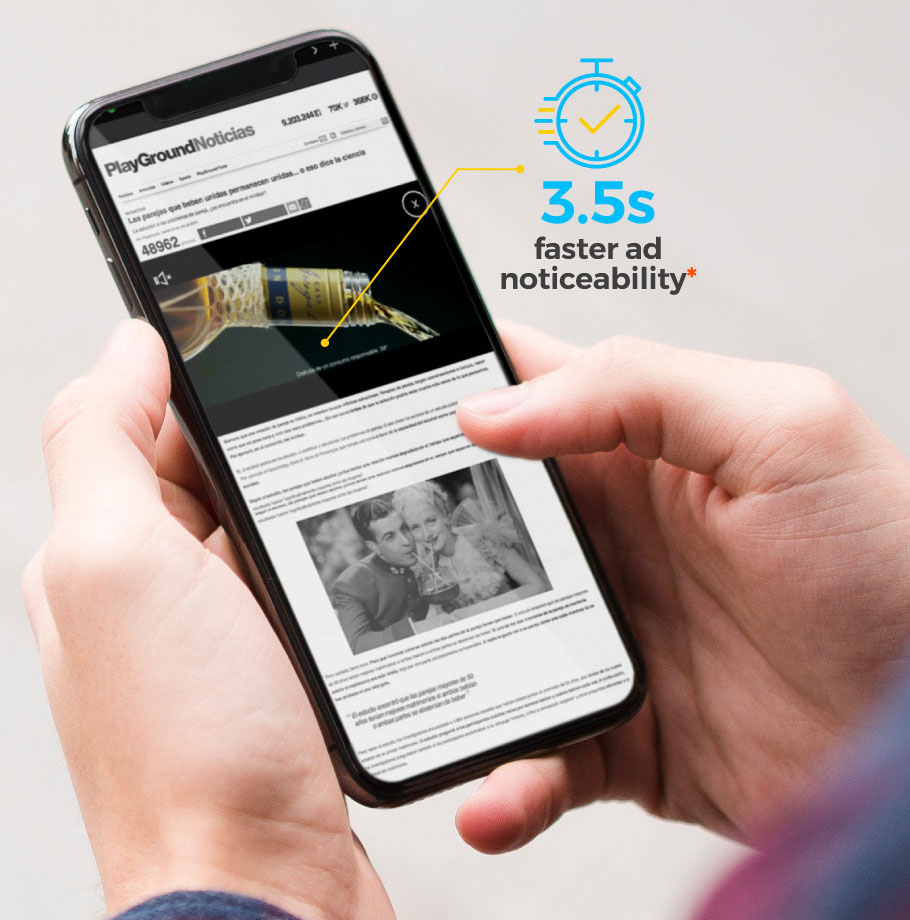
* In-Image Video vs. common video display
The prominence of images within content or
within articles results in users noticing ads faster
In-Image Ads
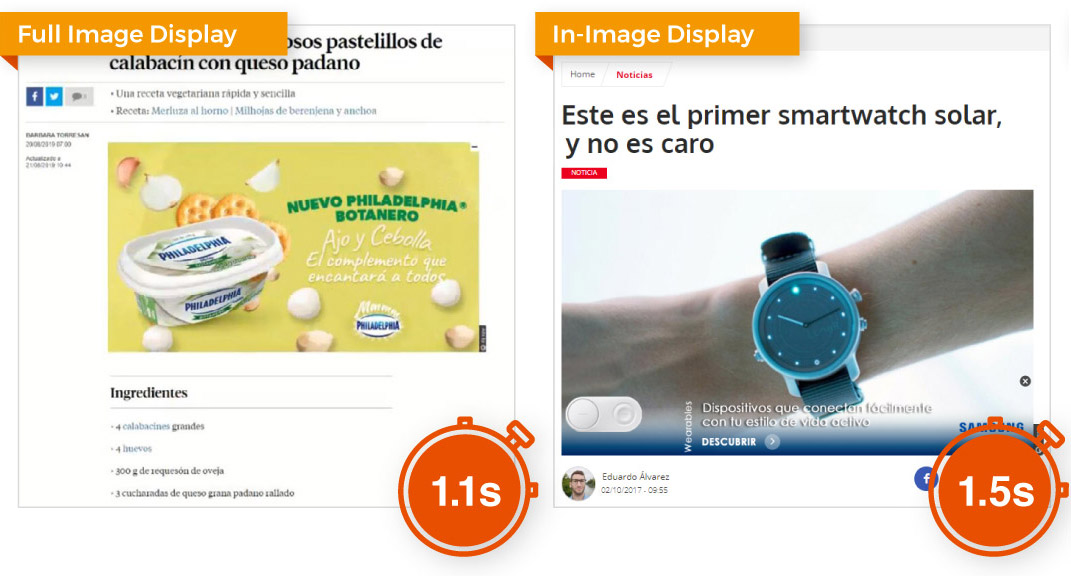
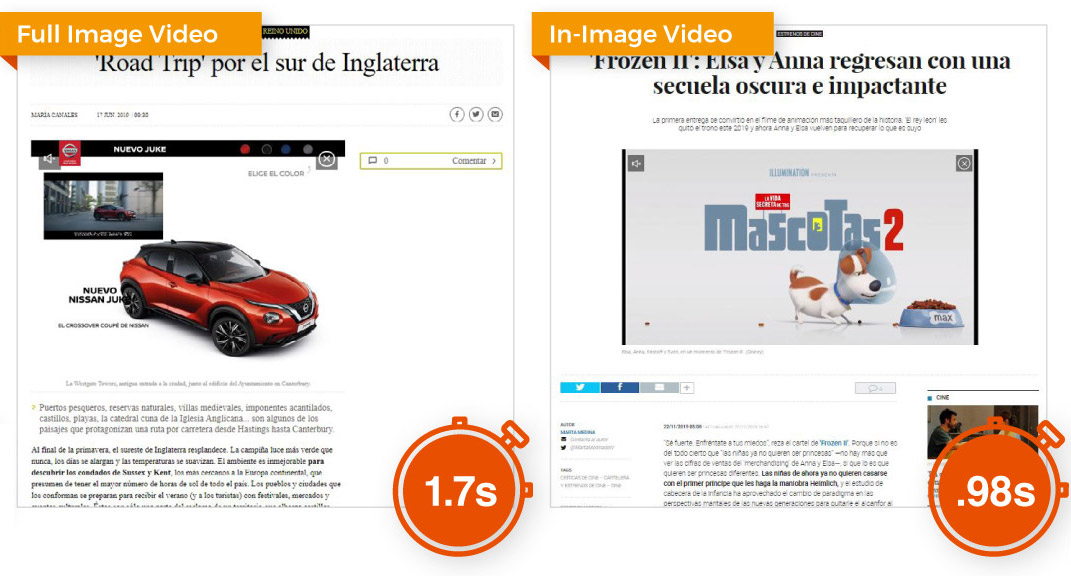
Common Display Ads
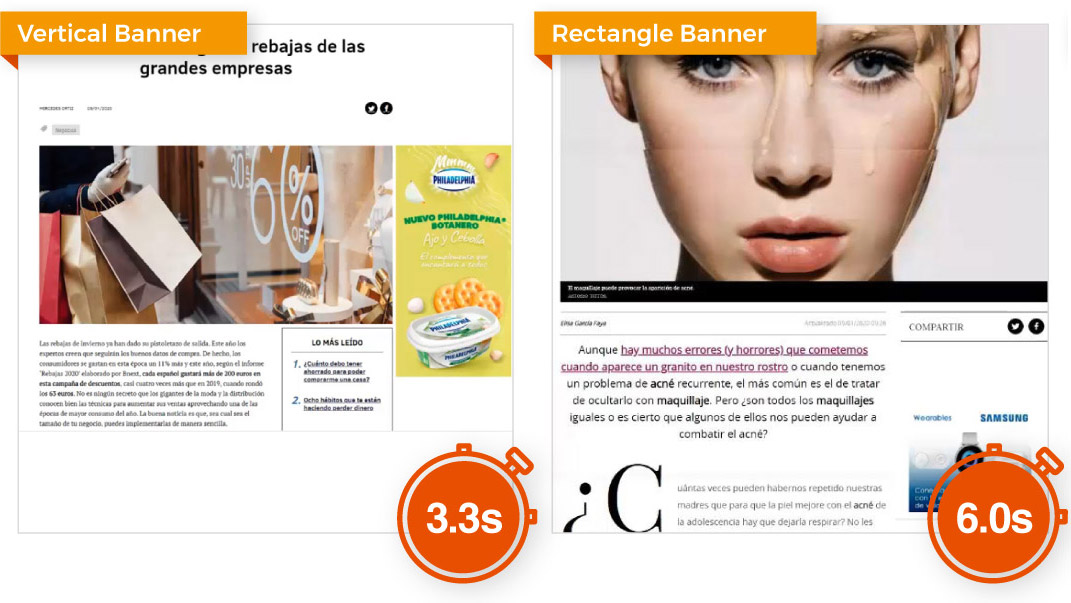
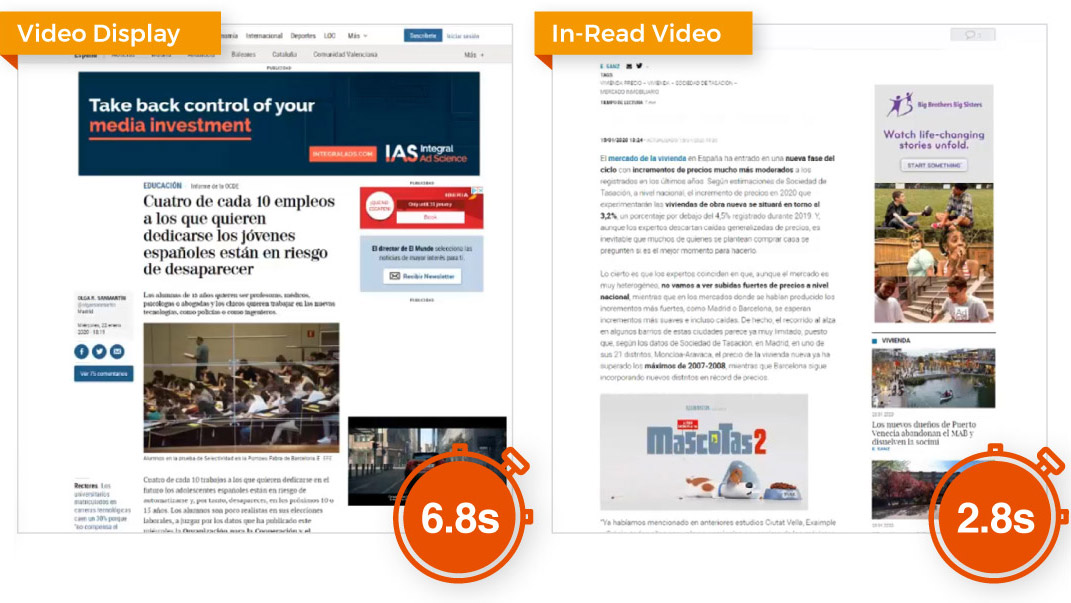
Eye-tracking clearly shows the challenge that common display formats face when it comes to gaining viewer attention. On the other hand, the front and center nature of In-Image ads results in very strong engagement from the outset. Within the research conducted, eye-tracking was utilized to monitor where consumers were looking within pages and how much time they spent looking at different areas of the page and ads within the page.
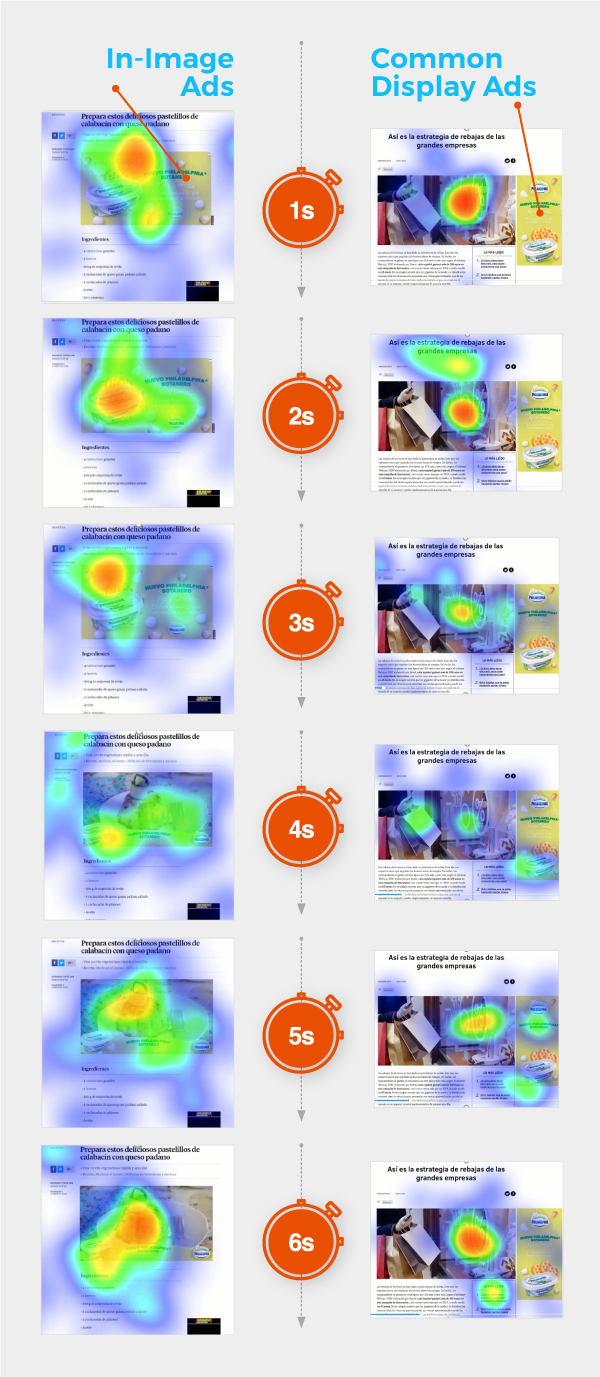
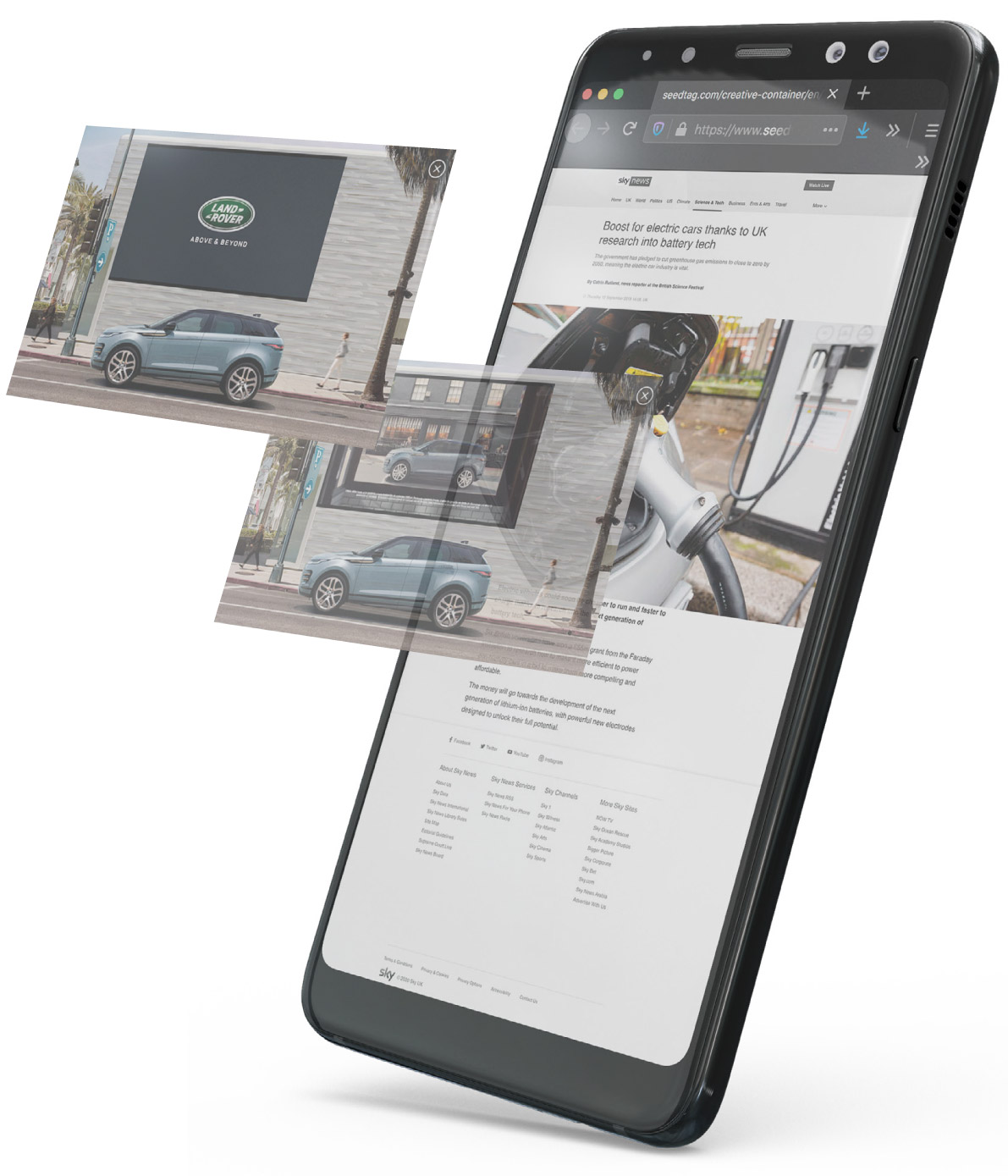
When it comes to maintaining attention, In-Image ads are 4 to 6.7 times more effective. In today’s media environment with declining consumer attention spans, ads that can maintain stronger attention have the ability to generate more impact.
* Viewer attention measured how long people looked at the area where the ad was located on average, across all respondents
View Quality: Beyond Viewability
Viewability is a common metric used to help evaluate campaign performance, but it does not take into account several important factors that impact whether a campaign is successful. Elements such as ad creativity, ad placement and predisposition or affinity to content can all influence the quality of the “view”. We wanted to go beyond simple viewability and develop a new metric that takes into consideration the percentage of people that were not just exposed, but actually looked at the ad (% seen ad – based on eye-tracking). We also wanted to take into account the length of time people spent on average watching the ad (% watched – based on eye-tracking). With these two components we were able to identify an index score: (% seen * % watched) *100 which highlights the difference in view quality between common video display ads and In-Image Video ads targeted contextually. Consumer viewing behavior showed that In-Image Video ads deliver 6.8x stronger view quality through greater noticeability (viewers looking at the ads, +18% stronger for In-Image Video) and engagement (time spent watching the ads, +25% stronger for In-Image Video).
People respond more
positively to In-Image ads
We have found that creativity and engaging formats are key to increase positive reactions to advertising. In-Image ads are more attractive, enjoyable and interesting for consumers than regular/common display formats/ads.
Display formats only
Less negative feelings
about the brand
By delivering ads on positive content, you can ensure stronger brand safety and reach users who have a more positive mindset at the point they are exposed to your ad.
In-Image + Contextual Targeting
Contextual ad serving also ensures that the advertising is aligned with the content that the viewer is consuming at the specific time of exposure, matching interest in real-time. This targeting creates a safeguard and stronger fit between brand and content. The majority of consumers explicitly state that they prefer ads related to the article or content they are consuming.
That preference also translates to brand favorability and an overall stronger emotional response and experience for consumers. The ability to leverage a partner who can target based on real-time content consumption benefits all parties: Content providers, advertisers and consumers.
In-Image ad placement and contextual targeting can help deliver brand safety and create a halo effect for the brand
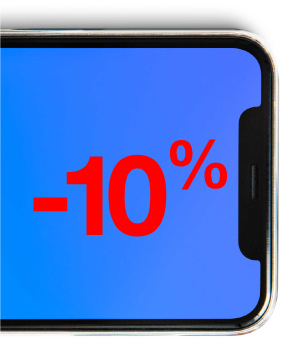
Common video +
negative content
Message delivered into negative content, damaging brand perception (no brand safety)
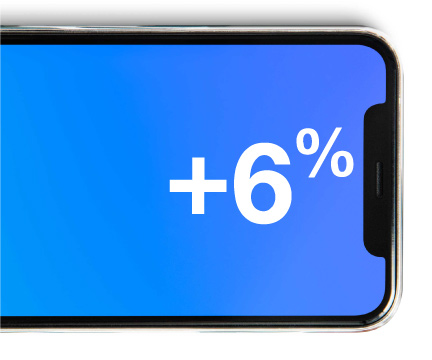
Common video +
relevant content
Brand is displayed on positive and relevant content, but due to its placement within the webpage, the association between brand and content is limited.
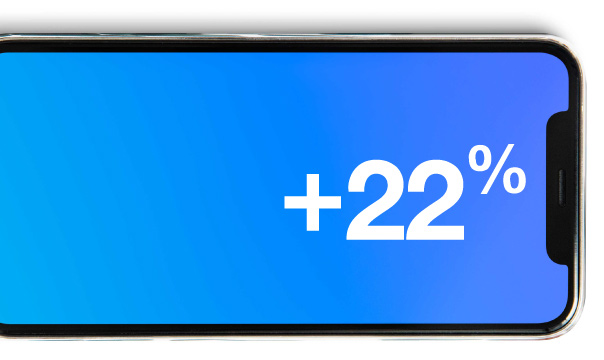
In-Image Video + relevant content
Brand is strongly associated with safe and relevant content, plus the ads are now fully integrated into the article’s image, creating a halo effect into consumers.
Engagement + Positive Reaction =
Stronger Brand Impact*
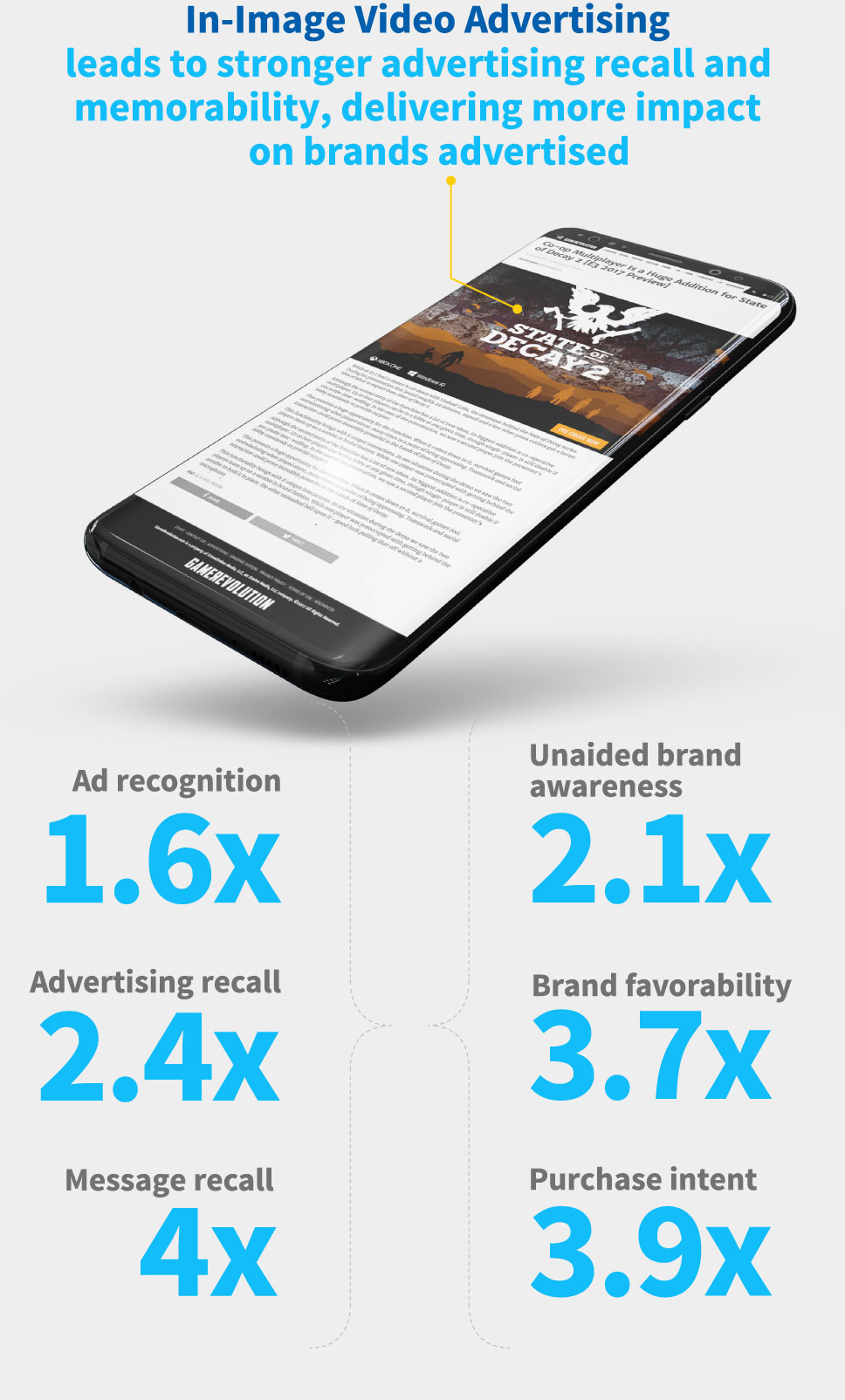
* Stronger brand impact is the increase in performance when comparing In-Image Video ads to common video display ads
Implications
In today’s media environment, marketers face increasing challenges related to consumer attention, viewability, brand safety and effective targeting. Some of these challenges are even greater on mobile platforms. This can place even more pressure on campaigns to breakthrough to consumers, but ads need to be able to pass these hurdles in order to effectively impact brand and campaign objectives.
The results presented in this paper demonstrate that utilizing contextually targeted In-Image ads can improve the efficiency and impact of your digital advertising. The biggest takeaway? Leverage consumers’ natural inclination to look at imagery that is featured within content pages. Using In-Image ads will help your campaigns:
Scores indicate the increase in performance for In-Image Video ads when compared to common video display ads.
Utilize In-Image Advertising and contextual targeting in order to:
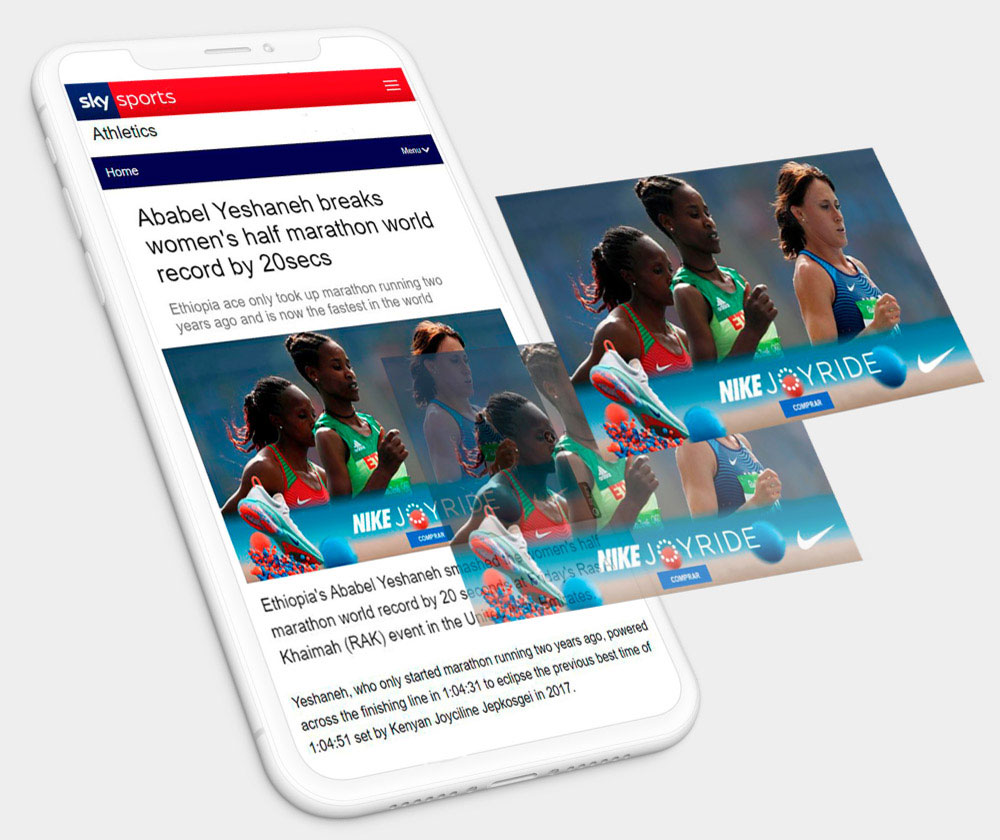

Use contextual targeting instead of relying on cookies

Drive stronger viewability and maximize the impact of impressions

Viewers spend more time on In-Image ads, giving you a better opportunity to communicate intended messages and drive your brand objectives

Generate stronger feelings, emotions and reactions, including purchase intent
About the research
The research project referenced within this paper was conducted from February 12th – February 23rd 2020. In total, MetrixLab surveyed 1,050 consumers between the ages of 18-55 via online interviewing. Participants evaluated digital campaigns from CPG, automotive, entertainment and technology categories. The campaigns featured both In-Image Display ads and common display ads. In-Image ads included Full Image Display, In-Image Display, Full Image Video and In-Image Video. Common display ads included vertical and rectangle banner, video display and in-read video. In order to accurately measure breakthrough performance and response to creative, MetrixLab applied its Ad-Vance creative testing methodology. Ad-Vance leverages in-context, unforced exposure to digital ads in a natural environment. This approach enables MetrixLab to measure behavioral, attitudinal and emotional responses to advertising via system 1 and system 2 techniques, including eye-tracking and implicit reaction evaluation. These techniques help measure reactions more naturally by showing how consumers publicly engage with content and ads.

Authors
Rick Candelaria,
MetrixLab
Vice President -SVP Innovation & Global Growth
Bernd Rijks,
MetrixLab
Managing Director of Spain and Global Key Account Director
Want to know more?
About 
MetrixLab provides consumer insights that drive smarter business decisions. A truly global digital research agency, we pioneer new technologies and integrate multiple data sources to push the boundaries of research. This enables our experts to provide high-quality insights at scale, at speed and for an unparalleled value. Our passion, expertise, and solutions enable our clients to succeed at product innovation, brand engagement, and consumer value.
Active in over 90 countries, MetrixLab is a proud partner of more than half of the world’s top 100 brands and part of Toluna.
About 
Seedtag was founded in 2014 by two former Googlers with a clear mission: To change how online advertising is done. Today Seedtag has a large international presence with over 130 employees across main markets in Europe, Mexico and Brazil and is positioned as the In-Image Advertising leader in Europe and LATAM.
Seedtag allows brands and publishers to take advantage of images in the most responsive, bespoke and non-intrusive way. Their proprietary technology uses the power of machine learning to provide human-like understanding of content, the highest level of brand safety in the industry and unmatched, cookie-less targeting capabilities.
MetrixLab operates a Social Insights Privacy Policy, which takes into account the privacy of people publishing content online.
